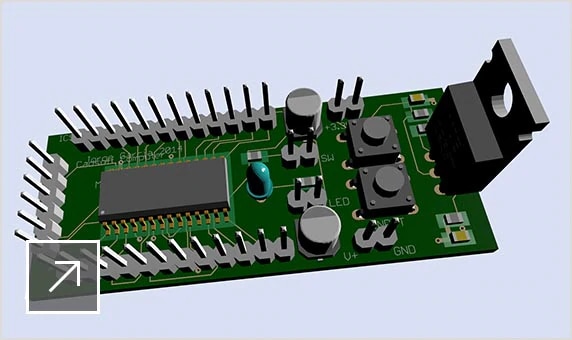Are you the proud owner of a 1999 Chevy Blazer, but feeling a bit overwhelmed by its intricate electrical system? Understanding your SUV's wiring diagram is essential for troubleshooting issues, enhancing performance, or even embarking on DIY repairs. In this blog post, we'll dive deep into the 1999 Chevy Blazer wiring diagram, breaking down its components and connections to help you master your vehicle's electrical system. Whether you're a seasoned mechanic or a novice enthusiast, our guide will empower you to navigate the complexities of your Blazer's wiring with confidence.
[diagram] 2004 Trailblazer Ke Diagram Wiring Schematic Full Version Hd
When it comes to understanding the electrical system of your 1999 Chevy Blazer, having access to a comprehensive wiring diagram is essential. The 2004 Trailblazer KE wiring schematic serves as an invaluable resource, offering a full version in high definition that can help you navigate through the complexities of your SUV's electrical components. This detailed diagram provides clear visuals and annotations, making it easier to identify wiring connections, troubleshoot issues, and perform modifications with confidence. Whether you're a seasoned mechanic or a DIY enthusiast, mastering the wiring schematic not only enhances your understanding of the vehicle but also empowers you to maintain and repair your Blazer effectively.
![[diagram] 2004 trailblazer ke diagram wiring schematic full version hd](https://i0.wp.com/www.2carpros.com/images/question_images/11683/original.gif) 159.223.119.28
159.223.119.28 5 Ways To Understand 1999 Chevy Blazer 4x4 Wiring Diagram
Understanding the wiring diagram for your 1999 Chevy Blazer 4x4 is crucial for tackling electrical issues and modifications. Here are five effective ways to get a grip on it: First, familiarize yourself with the layout by studying the key components, such as the battery, ignition system, and various sensors. Second, use color-coding to your advantage; the diagram typically employs specific colors for different wires, helping you trace connections more easily. Third, break down the diagram into sections, focusing on one area at a time, such as the lighting or power distribution systems. Fourth, consult the vehicle's service manual for additional context and troubleshooting tips that complement the wiring diagram. Finally, consider using online forums or video tutorials where experienced Blazer owners share insights and practical advice on navigating the wiring complexities. By following these steps, you'll enhance your understanding and confidence in managing your SUV's electrical system.
 support.alphadeltapi.org
support.alphadeltapi.org [diagram] S10 Blazer Engine Diagram Of 1999
Understanding the engine diagram of the 1999 Chevy Blazer is essential for any DIY enthusiast looking to tackle electrical issues or perform maintenance on their SUV. The S10 Blazer engine diagram provides a clear visual representation of the various components and their connections, making it easier to troubleshoot problems related to the ignition system, fuel delivery, and other critical functions. By familiarizing yourself with this diagram, you can gain insights into the wiring layout and identify potential issues before they escalate, ensuring your Blazer runs smoothly and efficiently. Whether you're replacing a faulty sensor or upgrading your electrical system, mastering the 1999 Chevy Blazer engine diagram is a crucial step in maintaining your vehicle's performance and reliability.
![[diagram] s10 blazer engine diagram of 1999](https://i0.wp.com/ww2.justanswer.com/uploads/KA/KALAMYKID/2012-10-07_204712_ignition_module_location.jpg) wiringschema.com
wiringschema.com ©chevy K5 Blazer Wiring Diagram ⭐⭐⭐⭐⭐
When it comes to understanding the electrical system of your 1999 Chevy Blazer, having a reliable wiring diagram is essential, and the ©Chevy K5 Blazer wiring diagram is a fantastic resource. This detailed diagram provides a clear visual representation of the vehicle's wiring layout, making it easier for both novice and experienced DIY enthusiasts to troubleshoot electrical issues. From understanding the connections for the headlights to the intricate wiring for the ignition system, mastering this diagram can empower you to tackle repairs and modifications with confidence. Whether you're restoring a classic or simply maintaining your SUV, the ©Chevy K5 Blazer wiring diagram will be your roadmap to a fully functional and efficient electrical system.
 zufladapelnakoronek.blogspot.com
zufladapelnakoronek.blogspot.com Complete Wiring Diagram For Chevy Blazer Revealed
In our comprehensive guide titled "1999 Chevy Blazer Wiring Diagram: Master Your SUV's Electrical System," we unveil the complete wiring diagram for the Chevy Blazer, providing you with the essential information to understand and troubleshoot your vehicle's electrical system. Whether you're a seasoned mechanic or a DIY enthusiast, this detailed diagram will serve as a crucial resource, helping you navigate through the intricate network of wires and connections. From the battery to the ignition system, our post breaks down each component, ensuring you have the knowledge needed to tackle any electrical issue with confidence. Don't let electrical problems hold you back—empower yourself with the insights found in our complete wiring diagram!
 pulseplots.com
pulseplots.com Other Wiring Gallery

schempal.com
Uncover The Wiring Diagram For The 2002 Chevy Blazer
wiringdiagram.2bitboer.com
87 K5 Blazer Wiring Diagram

tech.noakmech.com
Power Window Wiring Diagram Chevy

portal-diagnostov.com
All Wiring Diagrams For Chevrolet Blazer 1999

wiringdiagram.2bitboer.com
1998 Chevy Blazer Electrical Schematic

support.alphadeltapi.org
5 Ways To Understand 1999 Chevy Blazer 4x4 Wiring Diagram
![[diagram] ground wiring diagram 1999 blazer](https://i0.wp.com/repairguide.autozone.com/znetrgs/repair_guide_content/en_us/images/0996b43f/81/b0/df/11/large/0996b43f81b0df11.gif)
mydiagram.online
[diagram] Ground Wiring Diagram 1999 Blazer

stewart-switch.com
You Might Also Like: Sony Ccd Wiring Diagram Simplify Your
2002 Chevy Blazer Wiring Diagram

![[diagram] complete diagram of internalbustion engine](https://i0.wp.com/www.researchgate.net/profile/Madiha_Yasir/publication/278713262/figure/download/fig17/AS:667891317882890@1536249107945/Diagram-of-internal-combustion-engine.png?_sg=nde99Xh48jQRUcOcHzuZ-33gc16165_vo12h7TdyYyOkatnjPAFhBot7PCBgU2hbinr45d1SmvE) mydiagram.online
mydiagram.online  carschematics.com
carschematics.com  www.cecilmarineonline.com
www.cecilmarineonline.com  carschematics.com
carschematics.com  diagram.tntuservices.com
diagram.tntuservices.com 







 aaelectricalservices.co.uk
aaelectricalservices.co.uk  saelectrical.uk
saelectrical.uk  electricalwork.com.sg
electricalwork.com.sg  jahelectrical.co.uk
jahelectrical.co.uk  job-prices.co.uk
job-prices.co.uk 


 fab-pass.blogspot.com
fab-pass.blogspot.com ![[diagram] jimi hendrix stratocaster wiring diagram full version hd](https://i0.wp.com/www.johnbrownimages.co.uk/wp-content/uploads/SD-011-7702-Eric-Johnson-Strat-Rev-A-Model-1.jpg) mydiagram.online
mydiagram.online  wiringdiagram.2bitboer.com
wiringdiagram.2bitboer.com ![[diagram] strat wiring diagram master tone](https://i0.wp.com/i.postimg.cc/cC8vGtgt/stratocaster-wiring-master-volume-master-tone.png) mydiagram.online
mydiagram.online 


![[diagram] fender eric johnson stratocaster wiring diagram](https://i0.wp.com/www.fmicassets.com/Damroot/ZoomJpg/10008/0117702801_gtr_hdstckbck_001_nr.jpg)
![[diagram] fender eric johnson stratocaster wiring diagram](https://i0.wp.com/i6.photobucket.com/albums/y247/Gearjoneser/Geek Stuff/EJ1.jpg)
 www.wiringdraw.com
www.wiringdraw.com  wiringdiagram.2bitboer.com
wiringdiagram.2bitboer.com  riset.guru
riset.guru  techschematic.com
techschematic.com 





